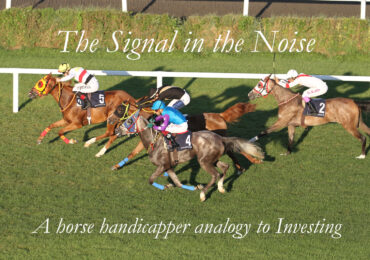During the first quarter, the S&P 500 has continued on a steady ascent – up 5.4 percent. From the March lows of a year ago, with dividends reinvested, it has now gained 76.8 percent.
We still question the sustainability of this recovery with unemployment sitting near 10 percent. As discussed in our prior letter, we believe this time around employment will be a leading indicator, rather than a lagging indicator. Low savings rates and little home equity, combined with high consumer debt, takes away the consumer’s ability to borrow while searching for a new job. This makes it difficult to maintain consumer spending, which makes up two thirds of the economy.
However, we must admit we have been shocked by the resilience in consumer spending. What we believe we are observing is what is referred to as the “wealth effect.” This is where the rise in asset values, such as stock portfolios, induces a false perception of increased wealth. This confidence boost causes consumers to be more willing to spend. When the bottom drops out, this temporary self-reinforcing cycle reverses its course.
In Alan Abelson’s March 22, 2010 Barron’s article, he writes about a discussion with Stephanie Pomboy, the Founder and President of MacroMavens, a company which provides macroeconomic research to the institutional investment community: “[There was approximately] a $10 billion reduction in the banks’ loss provisioning last year [which] was a major contributor to their gain in fourth-quarter earnings…There’s the possibility that banks are forced to mark to market all the toxic securities they carry at cost. If they were to follow the example of the FDIC, which in a sale last week marked down a batch of kindred securities, they’d have to take a 50% haircut.” Thus, the question remains if the new flexibility in marked to market accounting standards has led banks to hide losses.
We find it amazing how short memories are on Wall Street. One would think the panic of last year and ensuing market crash would have made a lasting impression. To our amazement, we are witnessing many investors returning to their speculative behavior.
Tidal Wave Investing
The stock market has run ahead of underlying fundamentals and we believe this rally has very little upside remaining. When the S&P 500 reached its all time high in October 2007, it was an unusual time. The market was at peak profit margins and lofty P/E multiples – a scenario that is unlikely we will see anytime soon. Furthermore, with the exception of the financial sector, most stocks are beginning to trade near the same prices they were during that peak. This may not seem correct because the March 31st close of $1,169 still has a seemingly 34 percent upside to return to the prior S&P 500 speculative high of $1,565. However, the financial sector used to make up over 20 percent of the index, comprised of stocks in which there were implosions, such as Freddie Mac, Fannie Mae, AIG, and Citigroup. If you were to account for these permanent losses of capital, the prior peak of $1,565 really equates to a level of about $1,325 today, which would only amount to a 13 percent gain, instead of 34 percent. In other words, the losses in the financial sector have created a false illusion that the stock market still has plenty of upside to return to prior peaks.
We believe that what we are currently experiencing is what we affectionately refer to as “tidal wave investing.” This is where “investors” (perhaps “speculators” is a better term) attempt to ride the wave in hopes of getting out before it comes crashing down. Tidal wave investors overlook the obvious oncoming problems simply for the sake of riding the wave because whenever there is a wave to ride, they want a piece of the action. True, riding the wave can be exhilarating in the moment, but not when they get tossed and turned in the aftermath. Things can turn on a dime, and picking that moment has never been easy. There were no newspaper headlines in March 2009 saying “Buy, Buy!” nor will there be any now saying “Sell, Sell!”
History has shown trying to time the market is, on average, a loser’s game. For example, there are studies which show mutual fund investors have had significantly lower returns than the mutual funds experienced themselves due to their poor timing of jumping in and out of these funds. In a vigorously overbought stock market, putting the financial security of our clients at high risk for a little upside is not a sport we are anxious to play. Instead, we are concerned with outperforming over the full cycle.
Thus, rather than picking stocks based on expectations of market directions, we take the more prudent and sensible approach. We focus on what will make stock prices of individual companies perform well over the full cycle by objectively analyzing the future cash flows the shareholder will receive from the business.
In the face of a rising market, our cautiousness may not be exuding credibility, but the more the broad market rises, the firmer we become in our stance. Overvalued markets do not run away forever because they simply cannot go up forever. In the interim we are willing to leave some money on the table to avoid a potentially devastating fall into the undertow. We are pleased that during this speculative advance, thus far, we have been keeping pace with the market while keeping high amounts of cash in the portfolio.
Western Union
Even though the broad market has rebounded sharply, it does not mean every stock has moved in concert. One such example is with Western Union, the world’s largest global money transfer business. Much of their business stems from immigrants who come from poorer nations to wealthier nations and send money back home to their family members. With a high proportion of their revenues coming from the Hispanic population, a major concern is the slowdown in manual labor (such as home construction) as well as risks of reform to immigration laws. Another concern is the possibility of other methods being introduced for sending money, such as new technology of sending money straight from cell phones. This, however, is likely much farther down the road, especially since targeted customers are immigrants that do not have bank accounts and are not as quick to embrace the latest technological gadgets. Of course, stagnant job growth and a slower economy also threaten the volume and size of transactions. However, remittances worldwide have held up well, likely because most of their customers are not sending back money for discretionary purchases, but money for basic necessities.
Western Union has locations in more than 200 countries and territories creating a network effect, a phenomenon where the value of a product or service increases as more and more people adopt it. Their network is three times larger than their next competitor, MoneyGram, and they process nearly five times more transactions. Yet, while they maintain the highest market share in cross border remittance, it is still only 18 percent, allowing plenty of room for growth. Western Union’s expansion potential is very large in emerging markets such as China, India, and the Philippines. Their brand is the most recognizable in the industry, making new entry difficult for those without a network effect. Their strong brand also helps give them pricing power, or at least allow them to grow volume faster than price declines.
Moreover, this high market share provides scalability because both fixed costs and variable costs are very low. They are a highly profitable company with operating margins of 27 percent, twice that of MoneyGram. Their extremely low capital requirements allow them to return their enormous cash flow back to shareholders.
Before the market crash, the company traded around 20 times earnings and currently is near the lowest ever at about 12 times next year’s estimated earnings, compared to approximately 17.5 for other data service companies.
Concluding Remarks
In this environment, we have been building what we believe to be a fortress portfolio able to withstand a market pullback. However, we do not want our defensive stance to be misconstrued as a negative attitude toward stocks. We are very optimistic about the long-term prospects of the stocks in our portfolios. Our high quality stocks are selling at very low valuations, both historically as well as currently relative to the broad market.
Thank you for your continued confidence and trust.
Sincerely,
The YCG Team
Disclaimer: The specific securities identified and discussed should not be considered a recommendation to purchase or sell any particular security nor were they selected based on profitability. Rather, this commentary is presented solely for the purpose of illustrating YCG’s investment approach. These commentaries contain our views and opinions at the time such commentaries were written and are subject to change thereafter. The securities discussed do not necessarily reflect current recommendations nor do they represent an account’s entire portfolio and in the aggregate may represent only a small percentage of an account’s portfolio holdings. A complete list of all securities recommended for the immediately preceding year is available upon request. These commentaries may include “forward looking statements” which may or may not be accurate in the long-term. It should not be assumed that any of the securities transactions or holdings discussed were or will prove to be profitable. S&P stands for Standard & Poor’s. All S&P data is provided “as is.” In no event, shall S&P, its affiliates or any S&P data provider have any liability of any kind in connection with the S&P data. MSCI stands for Morgan Stanley Capital International. All MSCI data is provided “as is.” In no event, shall MSCI, its affiliates or any MSCI data provider have any liability of any kind in connection with the MSCI data. Past performance is no guarantee of future results.



